The long-awaited holiday has finally arrived, the camera is with you – and then there’s nothing but bad weather for days on end – how are you supposed to take photos…
Page Contents (click line to jump the text)
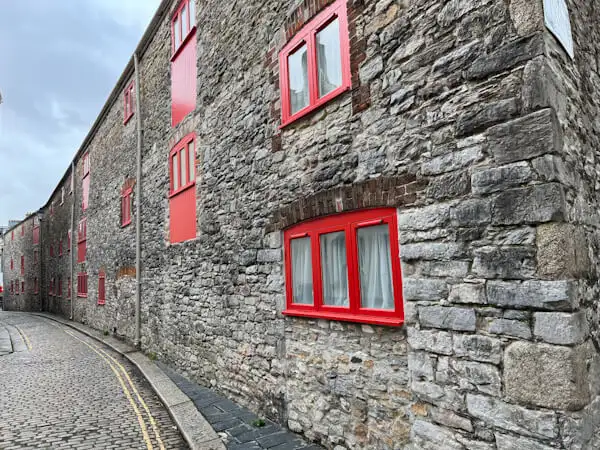
Intro
That’s not how I feel from time to time, that’s how I often feel, because I like travelling a lot in northern Europe, mainly in Ireland, Scotland and England at the moment.
And the weather there isn’t always great and there are often cloudy skies. It’s not always white fleecy clouds against a blue sky, or dramatic cumulus clouds in the golden sunset.
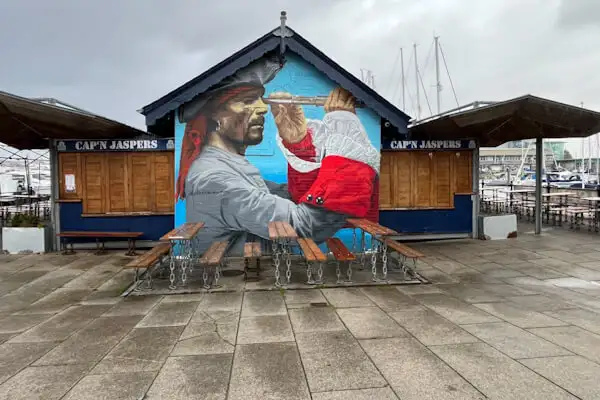
Often it’s just a grey, overcast sky that covers the island below in a dull light with weak contrasts and colours. Then there is drizzle, or a shower, then a bit of sun again, followed by more clouds.
Even if the general weather situation is promising, the micro-weather at my location can be completely different today, which makes any planning very difficult.
What’s more, I don’t go on a photo trip and follow the weather, I go on a trip and am somewhere on a specific day.
This is probably also the case for your holiday trip. Unless you’re travelling purely for photography. But more often you’ll be travelling with non-photographer partners, family or friends and they’ll also have ideas about their trip that aren’t just based on the light and the weather.
How you (and I) can still take beautiful photos on your trip, we’ll get to that now:
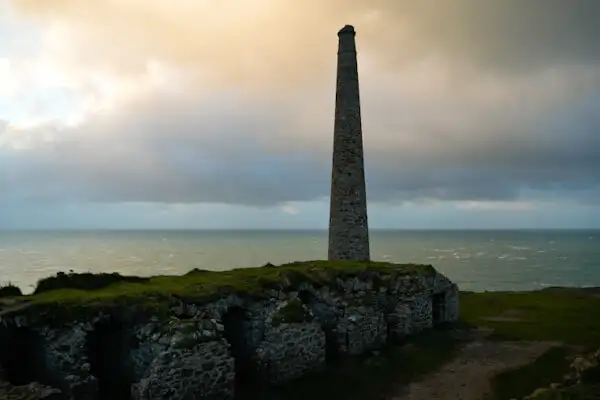
Basic mental attitude
The external conditions have never been such that I would describe them as ideal conditions for epic travel photos.
At some point I didn’t give a damn about the ‘ideal condition’, which never materialises, and simply tried to make the best of what I had in front of me. With my modest knowledge as an amateur.
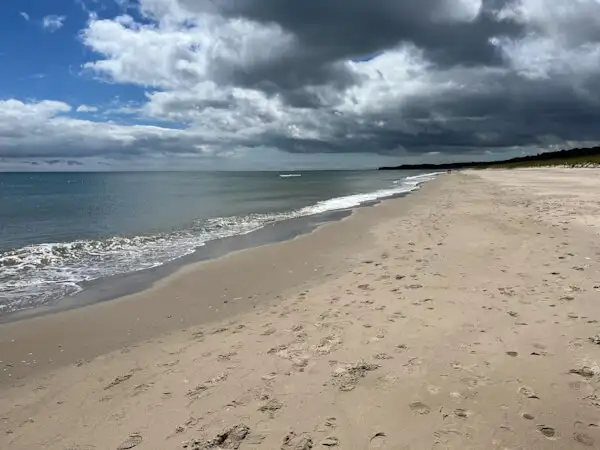
I was helped by the fact that I kept hearing from professional photographers that they ‘have to deliver reliably’, no matter what the conditions are like. Professionals have paying customers who want to see results and don’t want to hear about problems.
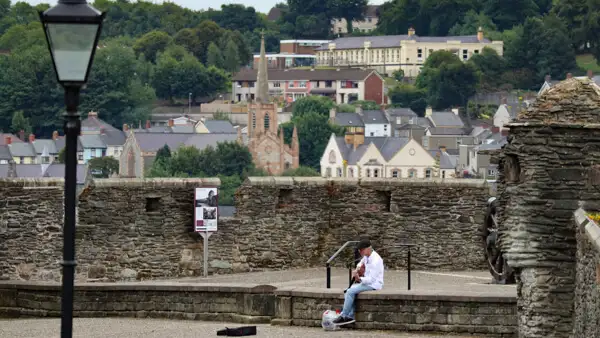
We amateurs don’t need it, but the basic attitude is good and helpful: straighten your back, open your eyes and go with the flow: When the sun is shining, I take sun photos and when it’s raining, I take cloud or rain photos.
Now we’ll get to how the latter can still look good…
Persistent rain in the city
No, that’s no fun for me either, and apart from worrying about my camera, I also lack the motivation to take photos in the rain.
But firstly, there are dust and splash-proof cameras (like mine) and secondly, there’s one place where rain isn’t so bad: In the city centre!
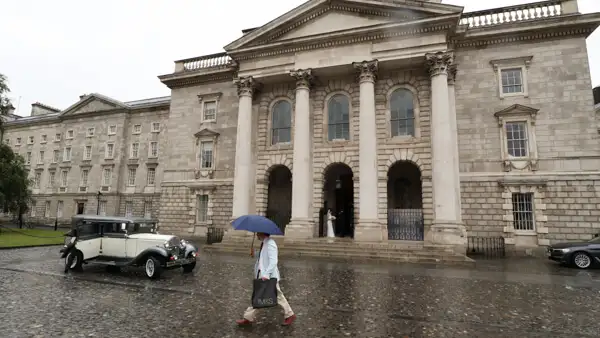
I find beautiful cities beautiful even when it’s raining. The architecture and sights are just as impressive, there is life on the streets and in the shops, cafés or museums and if it gets too wet outside, you can continue taking photos inside.
In fact, on a rainy day I have much more leisure to see an exhibition, a museum or a castle from the inside than when it’s sunny outside! And I also take photos indoors.
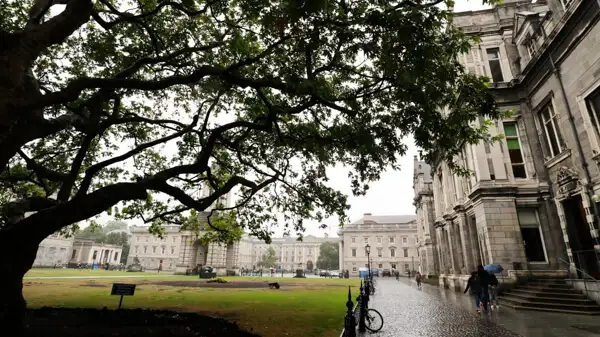
Street photography is not a problem in the rain, because the streets and the people are there. If you include reflections in your pictures, you have even utilised an element that works particularly well in the rain:
Illuminated buildings are reflected in puddles, as are street lights or people. Reflections on glass panes often look very good when water droplets hang on the panes. On a particularly grey day, you can take photos with artificial light, similar to dusk. The artificial light comes into its own much better than in bright sunshine.

Landscape photography in bad weather
But there are also exciting options in the landscape: The rainbow stretching over the hills or the foaming surf on a stormy day.
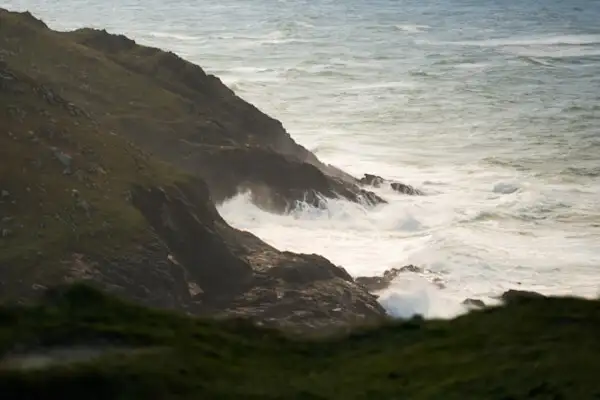
Dark clouds over a beautiful landscape can look spectacular when the sun briefly breaks through.
In fact, many landscape photographers like to take photos at the end of a storm or bad weather, when the light comes through again and individual, warm rays of sunlight model the landscape or create a dramatic sky.
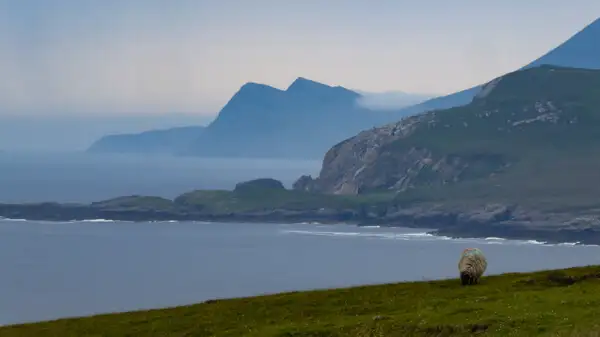
Landscape photography in fog
Rainy weather is also often accompanied by other phenomena, such as fog that settles ghostly over the landscape. Now you can take minimalist photos because the fog makes the background disappear:
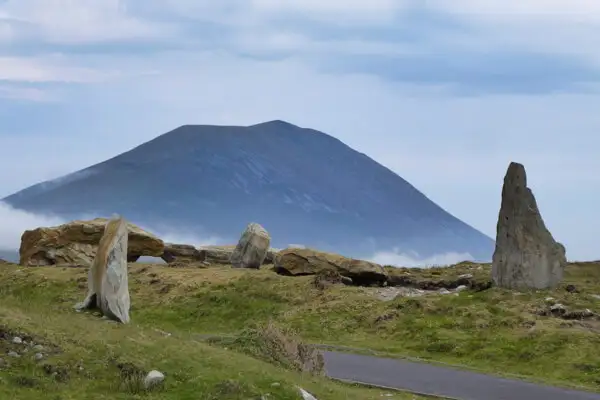
A single tree on a hill, cliffs or mountains that are partially shrouded in fog or trees in the forest that look as if they are standing alone in the fog. The fog shrouds – and the fog thus separates objects – if you think less ‘whole landscape’ and more ‘portrait-like details’, then you will be able to see and photograph many beautiful details.
Photo gallery
This is a term used in reportage: it’s not one good picture that tells the story or journey, but a good selection of different pictures – the photo spread.
Not every picture has to be an ‘Instagram banger’. You can tell a story about mountain worlds by photographing details and details and putting them together. This creates a picture of the mountains in the viewer’s mind’s eye, even if you haven’t taken a single panoramic shot.

How do you tell your travel story in several pictures? For example, on Instagram as a carousel, or in the WhatsApp group as a simple photo series, or as a post on a blog (like this one), or as a printed photo book.
The question is: What makes your trip to this place special – and that’s what you photograph and combine. It’s less about the weather and more about the many beautiful things you can see and enjoy there even in bad weather.
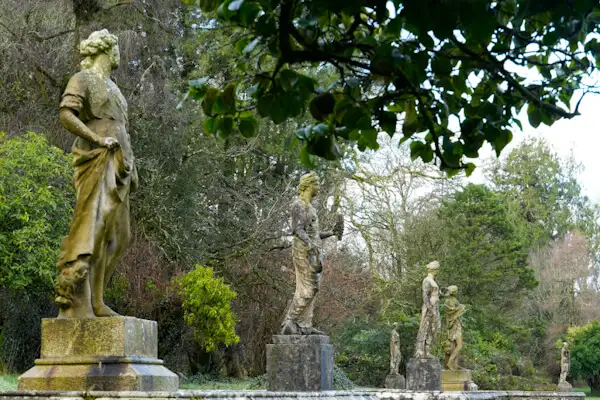
Overcast sky
In Ireland and the British Isles, the weather is often mild and pleasant, but the sky is closed in by a dull blanket of cloud.
One solution: include less sky in the photo. With interesting foregrounds or natural frames, you can draw attention to the exciting elements in the landscape and less to the uninteresting sky.
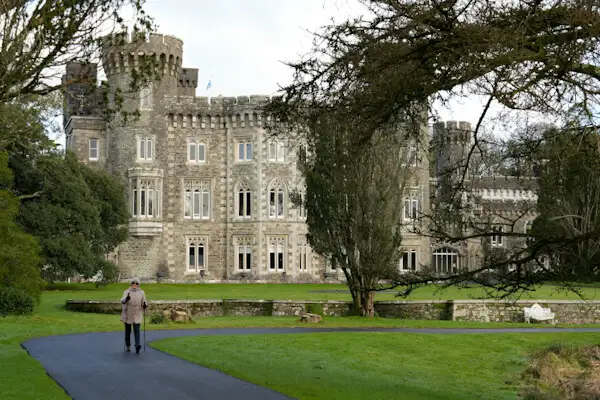
Incidentally, landscape photographers are often not fans of just a blue sky because it is just as uninteresting as a closed cloud cover.
Incidentally, a light cloud cover acts like a giant soft box: the light is more diffuse, but also softer than direct sunlight. Colours appear somewhat cooler and less saturated, contrasts become less.
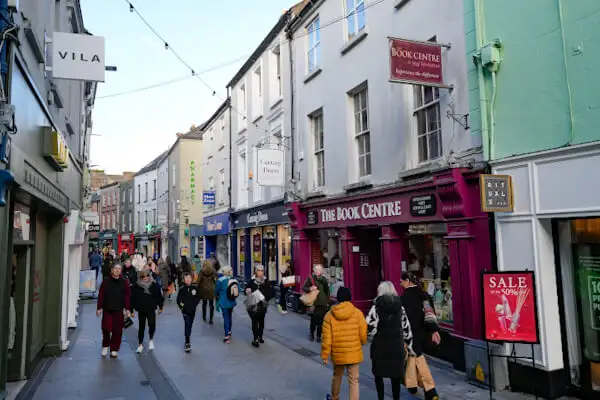
What initially appears to be a disadvantage is actually an advantage if you want to photograph people! In this light you don’t have any hard shadows on the face and skin tones look very natural.
A guest once said to me in Ireland: ‘It’s incredible how green everything is here – and the grey sky seems to enhance the effect even more.’ The man was right: a dark grey sky can make the green of nature appear lusher, richer and greener – or more dynamic and saturated in Lightroom terms. You can now get much more beautiful colours from the landscape than when the light is bouncing off the sky…
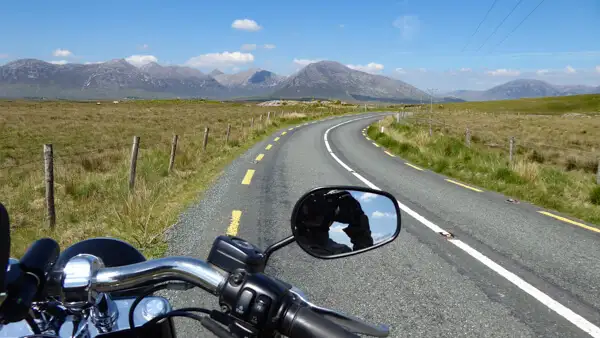
Hard, glaring light
Incidentally, I once had the most difficult photo conditions ever on the west coast of Ireland in midsummer: harsh, glaring light, blue sky without any clouds and hardly any modelling of the landscape through light and shadow, because the light mostly came directly from above.
My photos turned out terrible. Yes, blue skies, but otherwise no beautiful colours – just hard images without depth.
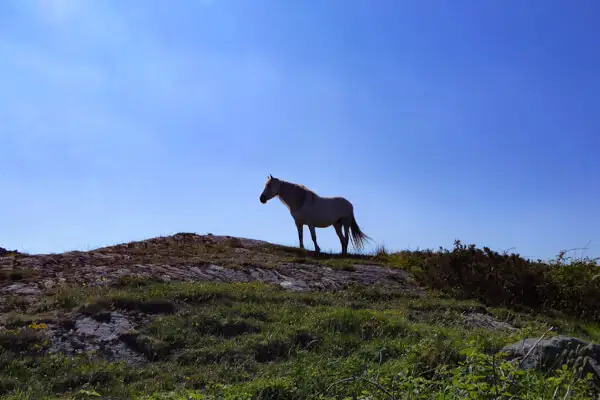
It was only later that I learnt from other photographers that you can also take good (or at least better) pictures in hard light:
In the early morning or late evening, the light is softer and more colourful. Yes, in summer it might be very early in the morning or very late in the evening.
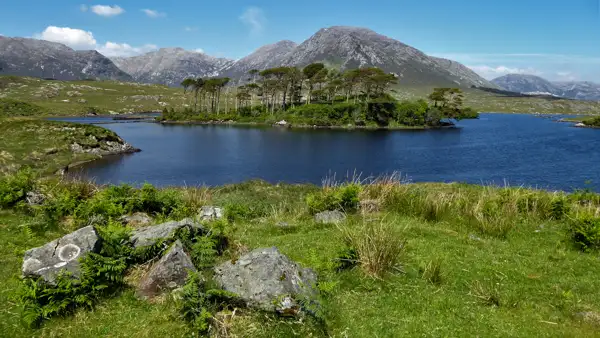
Photographing people – preferably in the shade, perhaps backlit with vegetation in the background to shield, reflect and soften the light.
In the narrow streets of an old town, harsh midday light can certainly create interesting shadows. Street photographers like to use this for high-contrast, almost graphic-looking images and we can do the same.
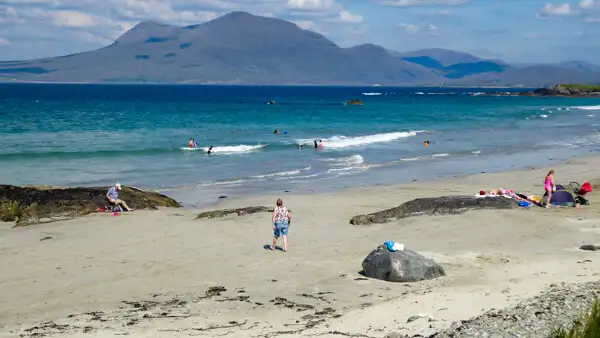
Photo editing
If you post-process your images, I use Lightroom for this, then play with the sliders a little and see what works for you.
You’ll find that your adjustments will be quite different in bright sunlight, grey skies or stormy weather.
Conversely, I’ve found that I can’t force the same image styles in post-processing in different weather conditions – it quickly looks very unnatural.
But just as we take the light as it falls when photographing, it is best not to fight this character in post-processing, but to support it.
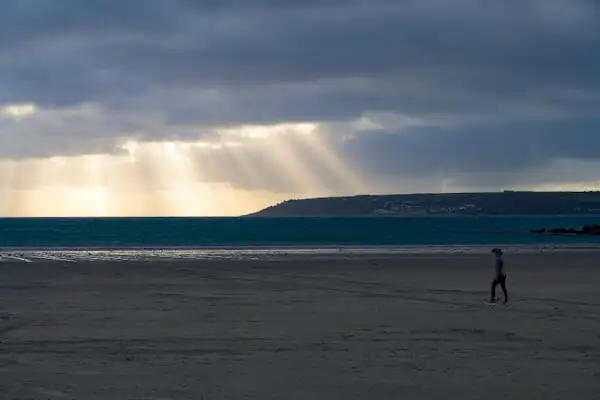
I simply don’t turn a rain picture into a sun picture or vice versa, that won’t work.
If I have little colour in the picture but a lot of light, then I can bring out a bit more colour in post-processing, but I can also try to emphasise the harsh contrasts that I had already noticed when taking the picture.
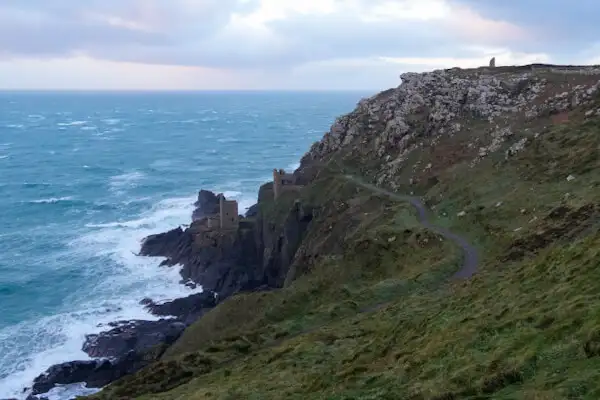
Conclusion
And if none of this helps? Then relax, you are a hobby photographer and not a professional and you can, but don’t have to deliver. ‘Go with the flow – and take it easy’.
Of course, a little ambition encourages us to try harder with our travel photography – but ultimately you’re on holiday and should enjoy your trip.
If things aren’t going well, just put the camera away and do something you want to do more – wellness, a concert or an exhibition, or simply chill out, eat well and drink coffee. Take a good one or watch a nice film.
Tomorrow is another new day with lots of photographic opportunities – have fun with your travel photography!

More interesting articles for you
Traveling landscape photography – basics
ZEN – OR THE ART OF TAKING A GOOD TRAVEL PHOTO
WHAT EXACTLY IS TRAVEL PHOTOGRAPHY?
Versatile full-frame cameras for travel photography
Picture credits cover picture: Fanad Head Lighthouse (Photo: Ulrich Knüppel-Gertberg)